Do your students struggle with avoir and être? Do you constantly hear things like, “Madame, je suis fini!” or “Pendant le week-end, j’ai allé au cinéma”? I’ve taught in three schools with three entirely different groups of students, and these mistakes happened everywhere. I’ve talked to French as a second language and French immersion teachers from all over, and they all report having issues with these two verbs.
So, what do we do to help students master avoir and être?
1. Correct students each time.
I know we want our students to feel encouraged to speak, but allowing these mistakes to happen early on allows the mistakes to settle in the brain that way, and students have a harder time breaking the habit.
If you are worried about discouraging them, you can ask them the question back, using the correct verb. For example, if a student says “Je suis peur” you can ask “Pourquoi tu as peur?” While you’re not directly correcting them, you’re helping with conversation skills, and you have provided the right verb (for a different subject), and those are both steps in the right direction.
2. Incorporate speaking into your class.
I’m sure you know that I am a huge believer that we need to integrate a lot of speaking activities in our classrooms. I love grammar, and I’ve always enjoyed grammar packets in English and French. When I learned Spanish, I loved those grammar packets, too.
However, the reality of it is, even if we love grammar, our kids probably do not, so we need to get them speaking and interacting. It is only through the actual use of the language that we will get them to retain the information correctly.
I love Find Someone Who activities because they are quick and easy to use. They will provide reinforcement for the already great lessons you have planned. Best of all, my Find Someone Who resources include printable questions that you can assign as follow up homework or use as a speaking quiz. You’ll also get French and English speaking rubrics!
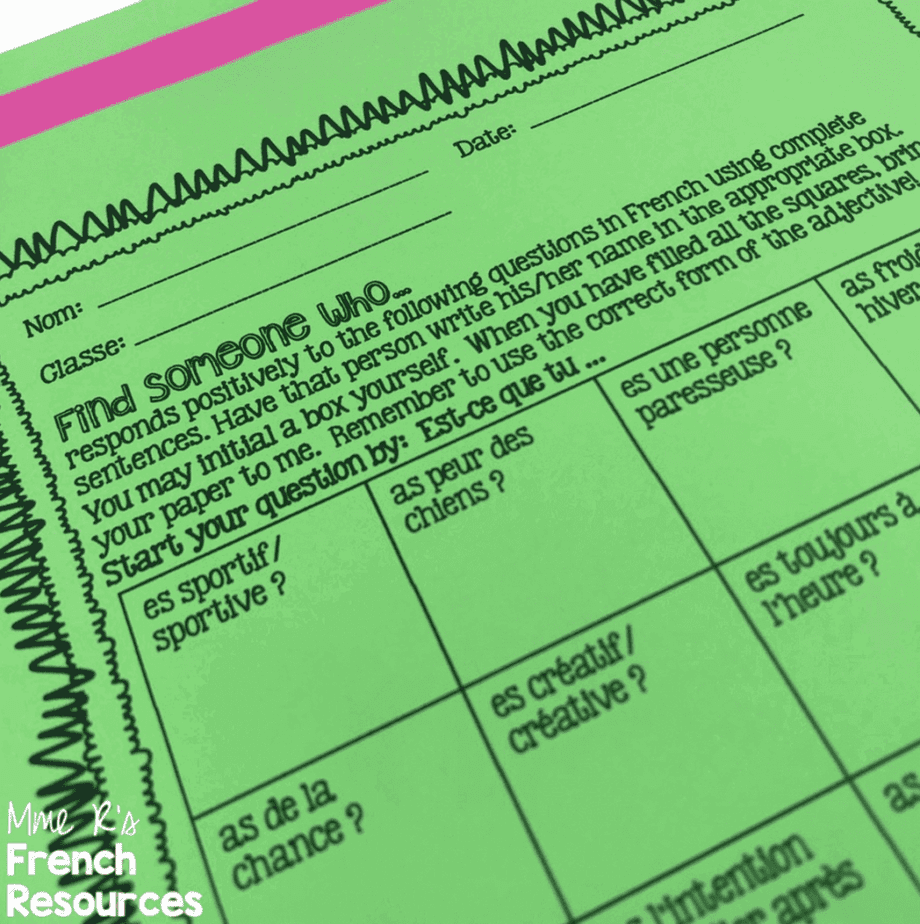
Click here to find this Avoir and être Find Someone Who resource.
3. Have fun with writing.
Something simple that we love to do is use our wipe-off boards and have verb races. If you have tablets, those work great, too! I break students up into 4 groups, and have one student from each group race to conjugate the verb correctly.
The student who raises his/her board first with the correct answer wins a point for the team. For differentiating between avoir and être, I put cloze sentences in a PowerPoint and I flash one sentence at a time.
If you need some examples of good present tense sentences and a follow-up homework, this avoir and être activity is really popular with French teachers. It comes in an all-French or in an English version for beginners.
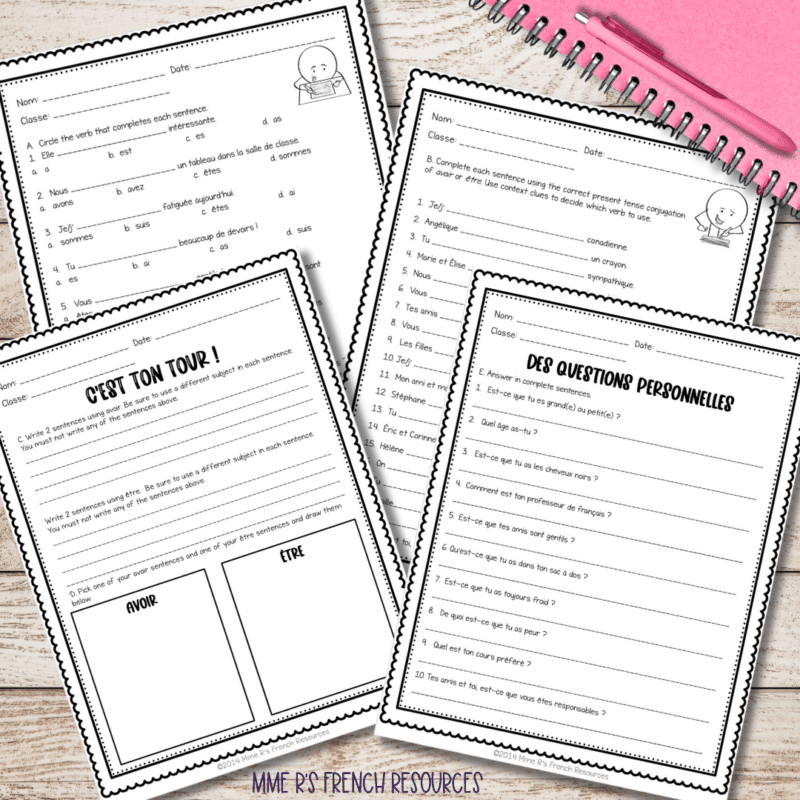
Click here to check out this avoir and être resource.
4. Incorporate technology into your classroom.
Have you checked out Boom Learning℠ yet? Boom Cards™ are fun, easy-to-use, and they are self-checking. If you have students who need extra practice or students who are always finished first, all you need is a computer, a smartphone, or a tablet with a modern browser, and students can practice their grammar concepts on their own!
This avoir and être activity is perfect for a passé composé review.
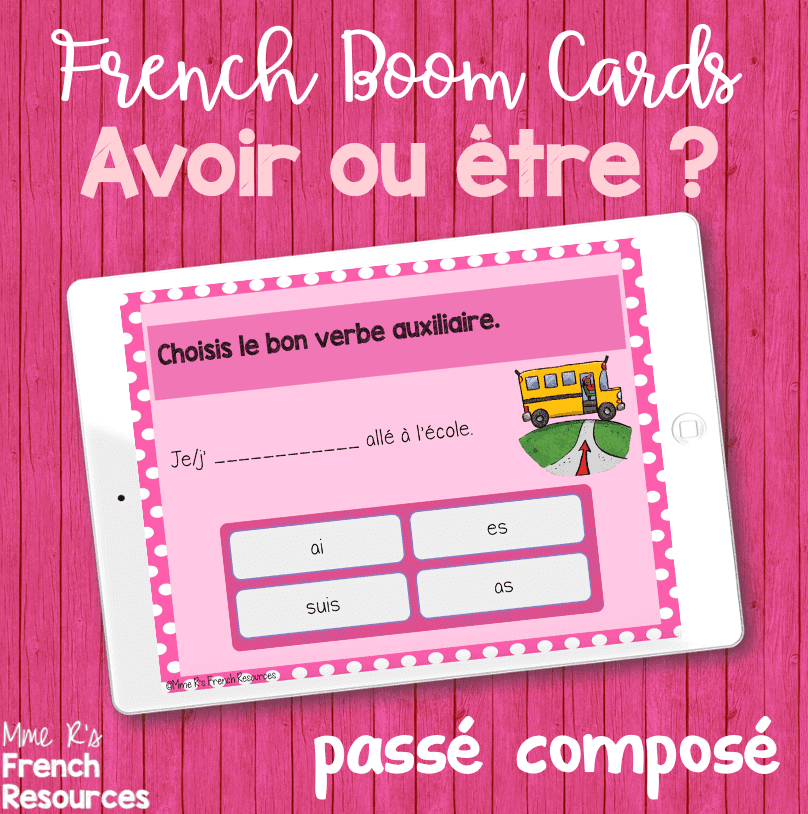
Click here to get this FREE fun digital task card set from my Boom Learning store.
Read more about Boom Cards : French verb conjugation task cards
5. Play with dice.
We use dice in my classroom all the time. I love to play games and have fun in class, and when the kids are having fun, they don’t even realize that they are learning! Plus, they are speaking French, which is super-important!
Here is a quick and easy game you can do with sets of colored dice. You’ll need approximately 10 dice in two different colors. I use white and blue because that’s what I found on sale at the toy store, but any two colors will work.
You simply write two columns on your board, and in the first column, you’ll number from 1-6, then put a subject pronoun next to each number. In the second column, you’ll put an adjective, an age, or something that would finish an avoir or être expression.
If practicing the passé composé, you’d put a mix of verbs conjugated with avoir and être.
Here’s what it should look like:
Blue die White die
1. je 1. 14 ans
2. tu 2. faim
3. il/elle/on 3. intelligent
4. nous 4. besoin d’un crayon
5. vous 5. grand
6. ils/elles 6. jeune
Give each group one die of each color. Students roll both dice and conjugate the correct verb needed to complete the sentence. They can answer orally (my preferred method) or you can have them write on a sheet of paper. Students take turns for the desired amount of time, and when you think they have had enough practice, you can call on a few students to make complete sentences.
These kinds of drills bring an element of fun into your classes, get students speaking, and best of all, they require very little prep on your part!
I hope these have been some handy tips for practicing avoir and être. What do you think? Are avoir and être more difficult than other verbs?
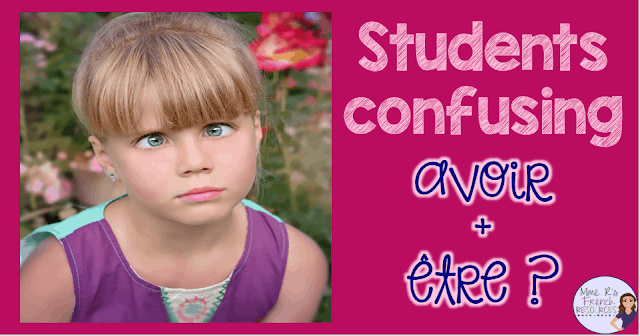
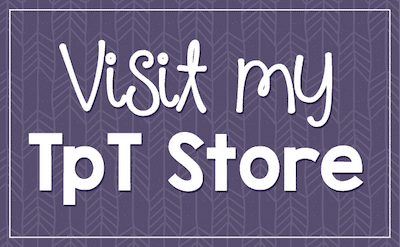

Mohamed says
Thank you so much for sharing this helpful tips.
Ashley says
You’re welcome! I’m glad it’s helpful!